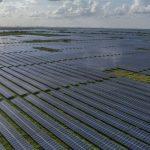Plus 33 percent for milk, plus 70 percent for grain and almost twice as much for potatoes: producer prices for agricultural products are rising at record speed because of the war. Consumers are likely to feel this soon.
Producers of agricultural products have raised their prices at a record pace in the first month after the start of the war in Ukraine. They rose by an average of 34.7 percent in March, as the Federal Statistical Office announced today.
“This is the highest year-on-year price increase since the survey began in 1961,” the agency said. “Compared to February 2022 alone, prices rose by 15.1 percent.” Plant products increased in price particularly sharply at 42.1 percent, animal products at 29.5 percent somewhat less strongly.
Grain price shoots up
The enormous price increase is partly due to the development in grain trading, which has been rising sharply since July 2020. In March, prices were 70.2 percent higher than in the same month last year. “The decisive factor for the enormous price increase in grain is the shortage of supply as a result of the war in Ukraine,” the statisticians explained. “As a result, the already tense situation on the world market with high demand at home and abroad has once again worsened significantly.”
91.7 percent more was charged for ware potatoes. This is mainly due to the low harvest quantities due to the weather and a relatively low price level in March 2021: At that time, there was a price collapse of more than 50 percent in the catering trade due to large harvest quantities and a lack of sales opportunities due to Corona.
Fruit is getting cheaper
The prices for rapeseed rose by 70.1 percent. This surcharge is mainly due to the scarce supply situation combined with high demand, for example for the production of biogas or the use of rapeseed as fuel, i.e. biodiesel. Producer prices for fruit, on the other hand, fell by 12.4 percent, with dessert apples becoming cheaper by 8.4 percent.
In animal products, for example, the price of milk rose very sharply by 33.3 percent. “The main reason for this is still a scarce supply of raw milk,” according to the statisticians. For slaughter pigs, prices rose by 21.1 percent and for cattle by 47.5 percent. This is also related to the rising prices for animal feed.
No end to price hikes in sight
This is bad news for consumers. You have to be prepared for persistently high price increases. Experts anticipate that retailers will likely pass on a larger portion of the costs to end consumers. Producer prices are considered an important indicator for the development of consumer prices. In April, with an inflation rate of 7.4 percent, prices had risen the fastest since 1981.
There is currently no end in sight to the sharp rise in prices. According to a survey by the Munich ifo Institute, more companies than ever before want to raise their prices in the next three months. “Inflation in Germany should therefore also be over seven percent in the coming months,” predicted ifo economics chief Timo Wollmershäuser.
Economists are therefore already in favor of further relief for people. “I’m afraid we haven’t reached the end of the road yet and will see food prices continue to rise as supply chains remain disrupted,” said Marcel Fratzscher, President of the German Institute for Economic Research (DIW). “Politicians shouldn’t wait any longer, but act now to avoid social hardship at an early stage.”










